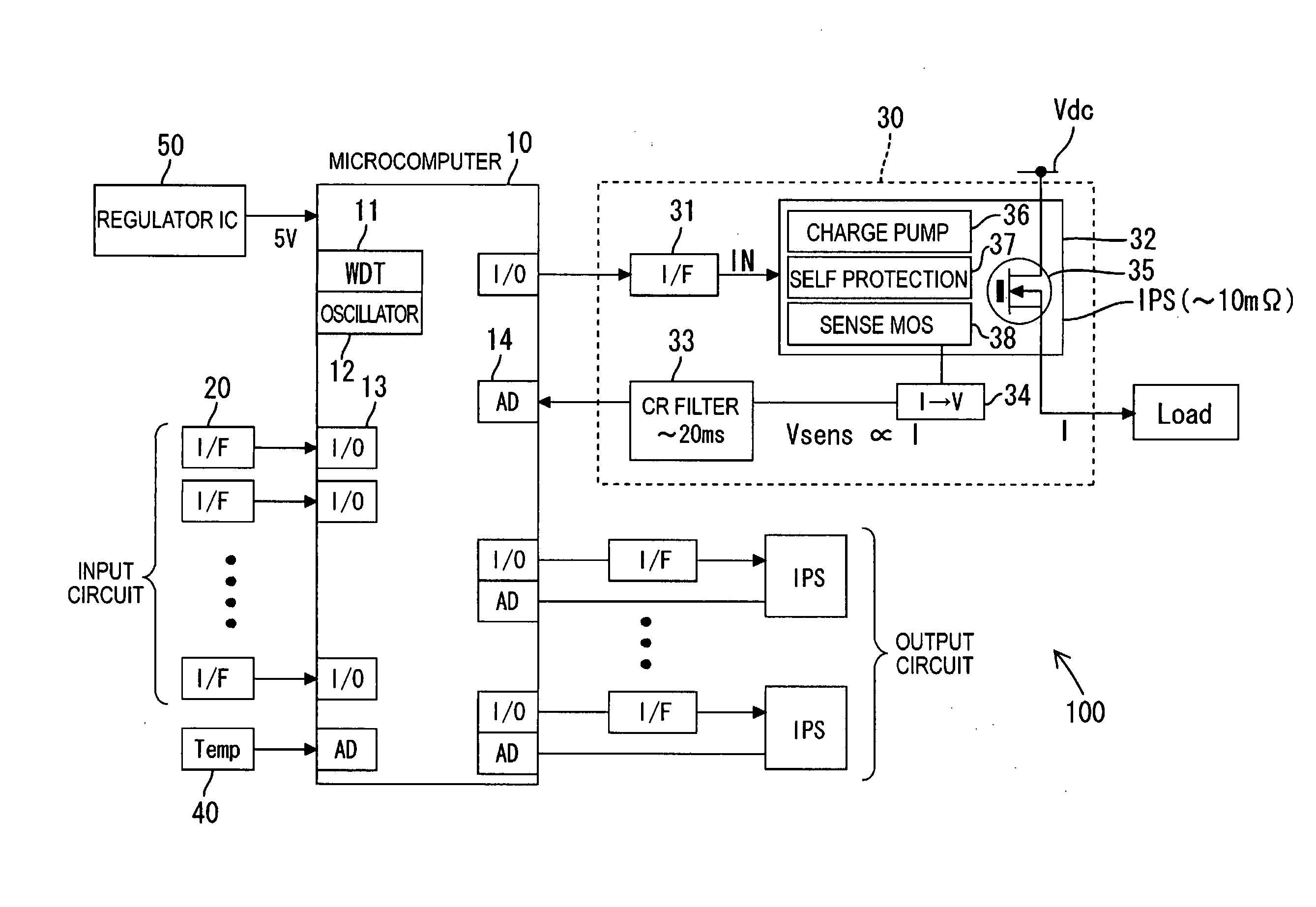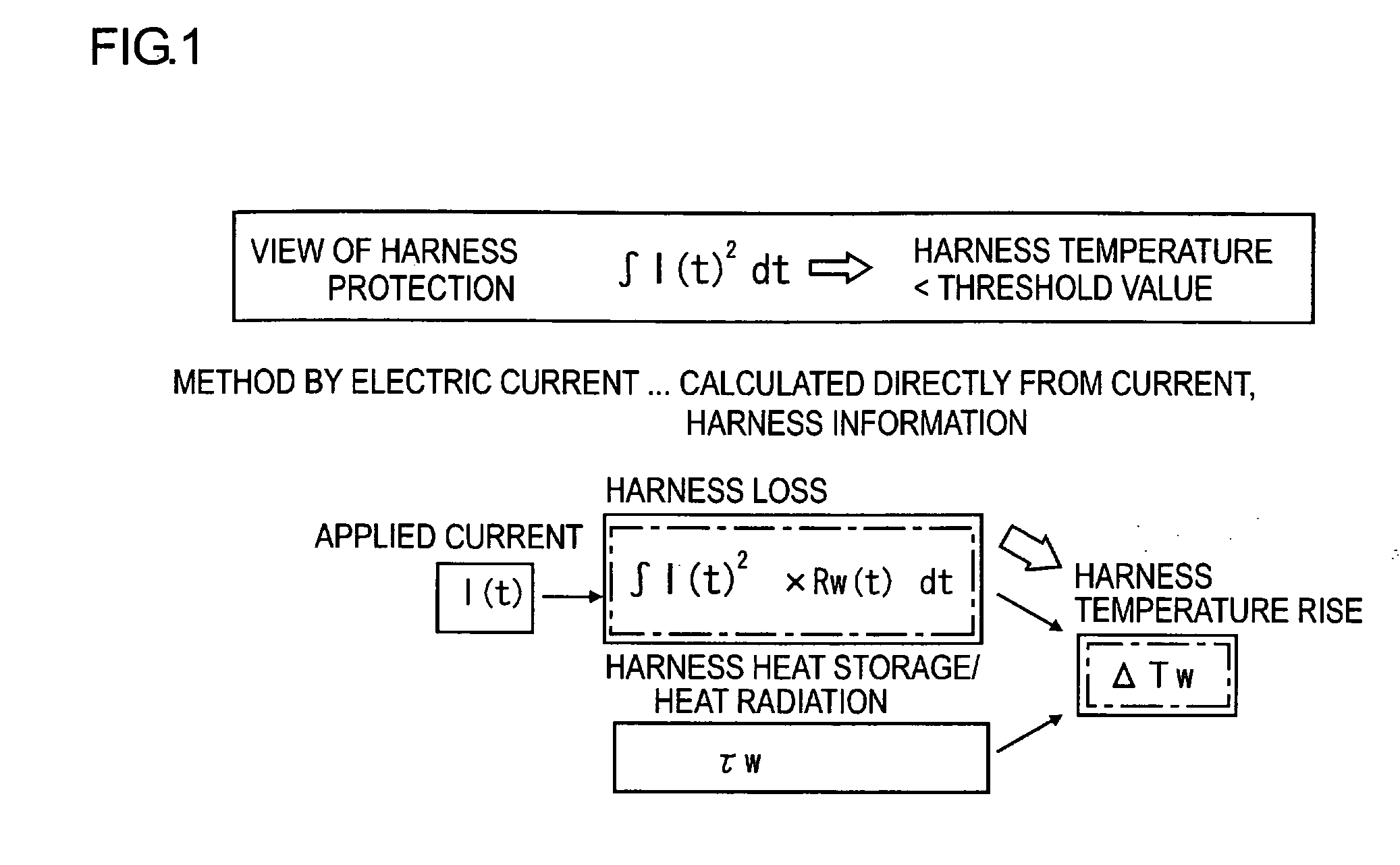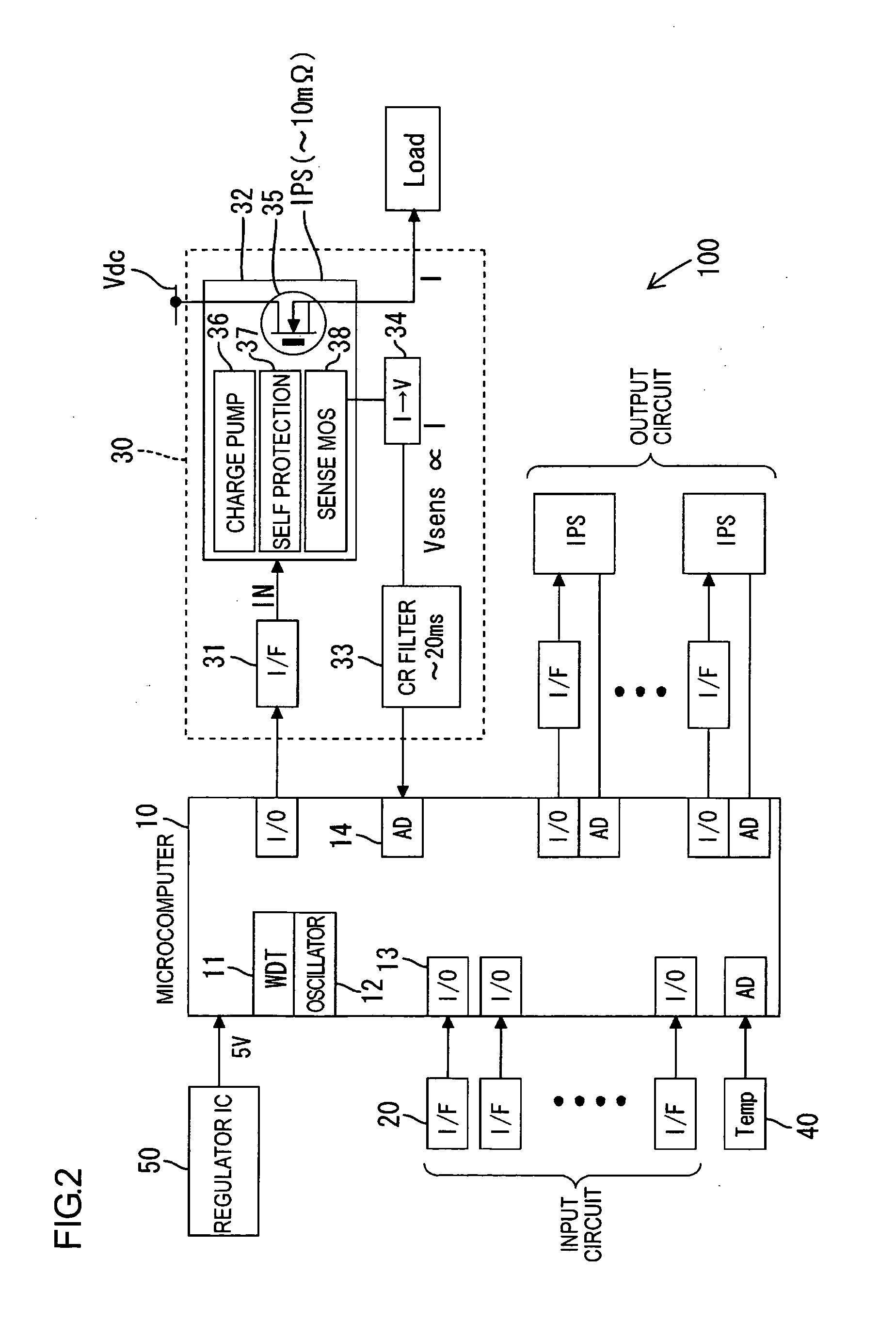Wire protection method and wire protection device
- Summary
- Abstract
- Description
- Claims
- Application Information
AI Technical Summary
Benefits of technology
Problems solved by technology
Method used
Image
Examples
Embodiment Construction
[0029]
[0030]An illustrative aspect in accordance with the present invention will be explained with reference to FIGS. 1 through 5. While a vehicle wire harness is intended as a wire to be protected in this illustrative aspect, the wire to be protected is not limited to this.
[0031]FIG. 1 is an explanatory view illustrating a concept of the wire (the wire harness) in accordance with the present invention. As illustrated in FIG. 1, in the present invention, a rise in temperature ΔTw in the harness is calculated directly from a loss of the harness due to an applied-current I, i.e. heat generation in the harness, and a heat-radiation time constant τw of the harness. Next, a temperature of the harness is estimated from the harness rise temperature ΔTw. This estimated harness temperature and a predetermined threshold value (an upper limit value) are compared, and then, when the harness temperature is equal to or higher than the predetermined threshold value, the applied-current I is broken...
PUM
 Login to View More
Login to View More Abstract
Description
Claims
Application Information
 Login to View More
Login to View More - R&D
- Intellectual Property
- Life Sciences
- Materials
- Tech Scout
- Unparalleled Data Quality
- Higher Quality Content
- 60% Fewer Hallucinations
Browse by: Latest US Patents, China's latest patents, Technical Efficacy Thesaurus, Application Domain, Technology Topic, Popular Technical Reports.
© 2025 PatSnap. All rights reserved.Legal|Privacy policy|Modern Slavery Act Transparency Statement|Sitemap|About US| Contact US: help@patsnap.com



